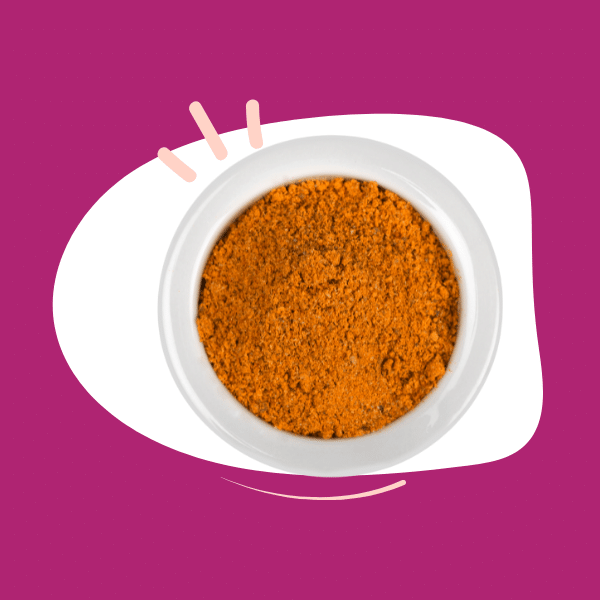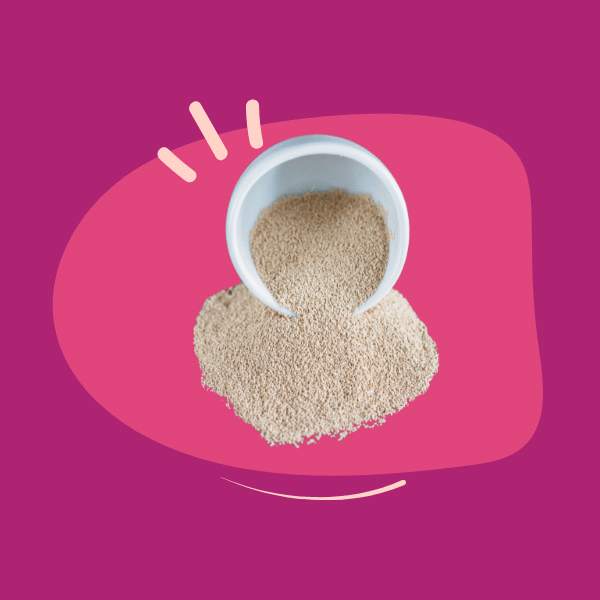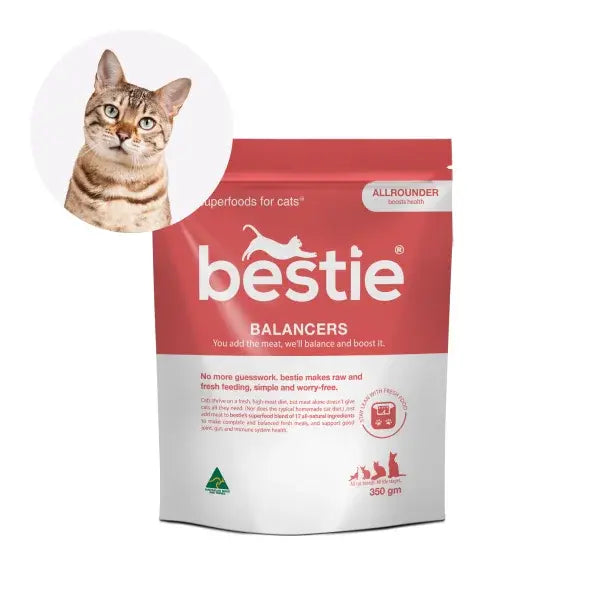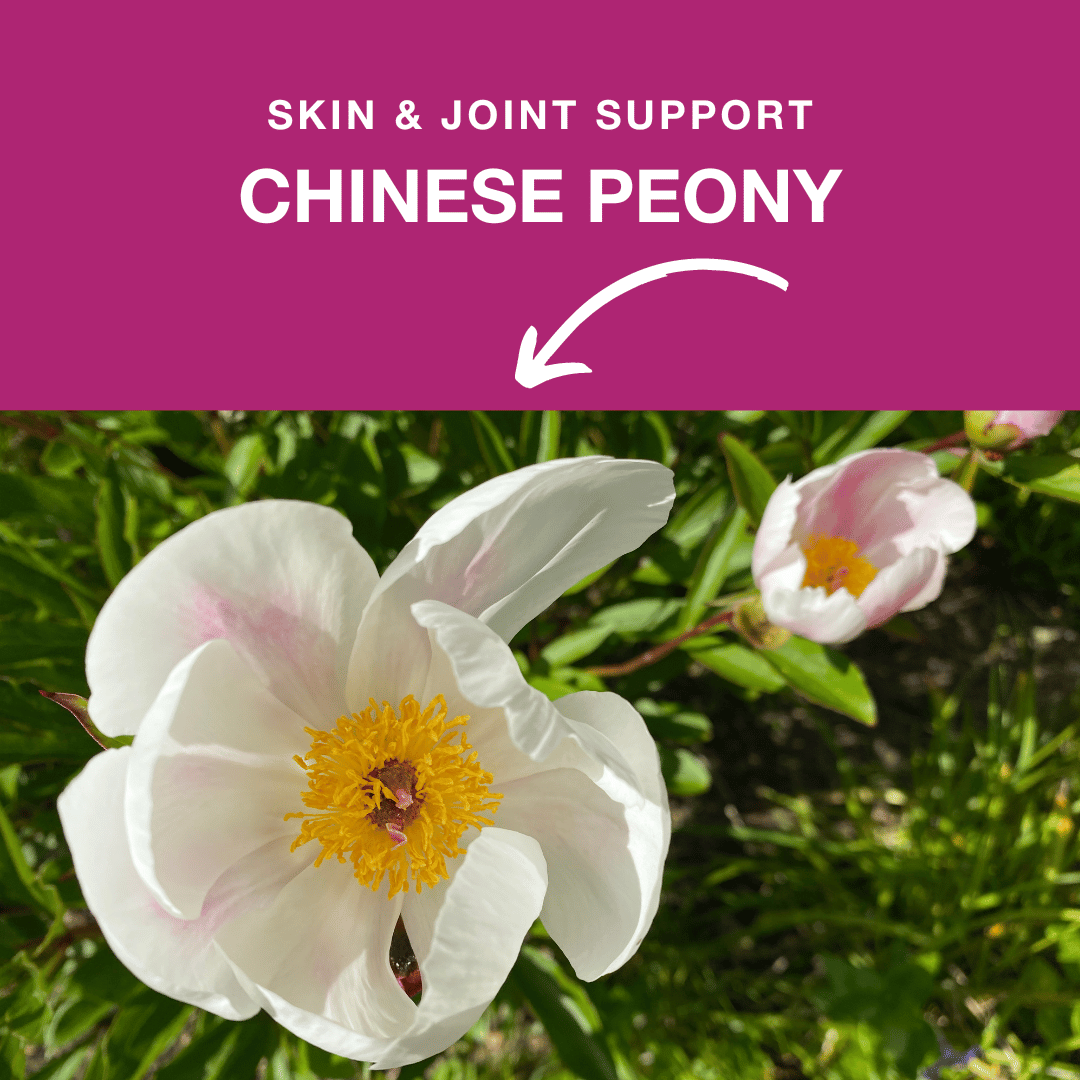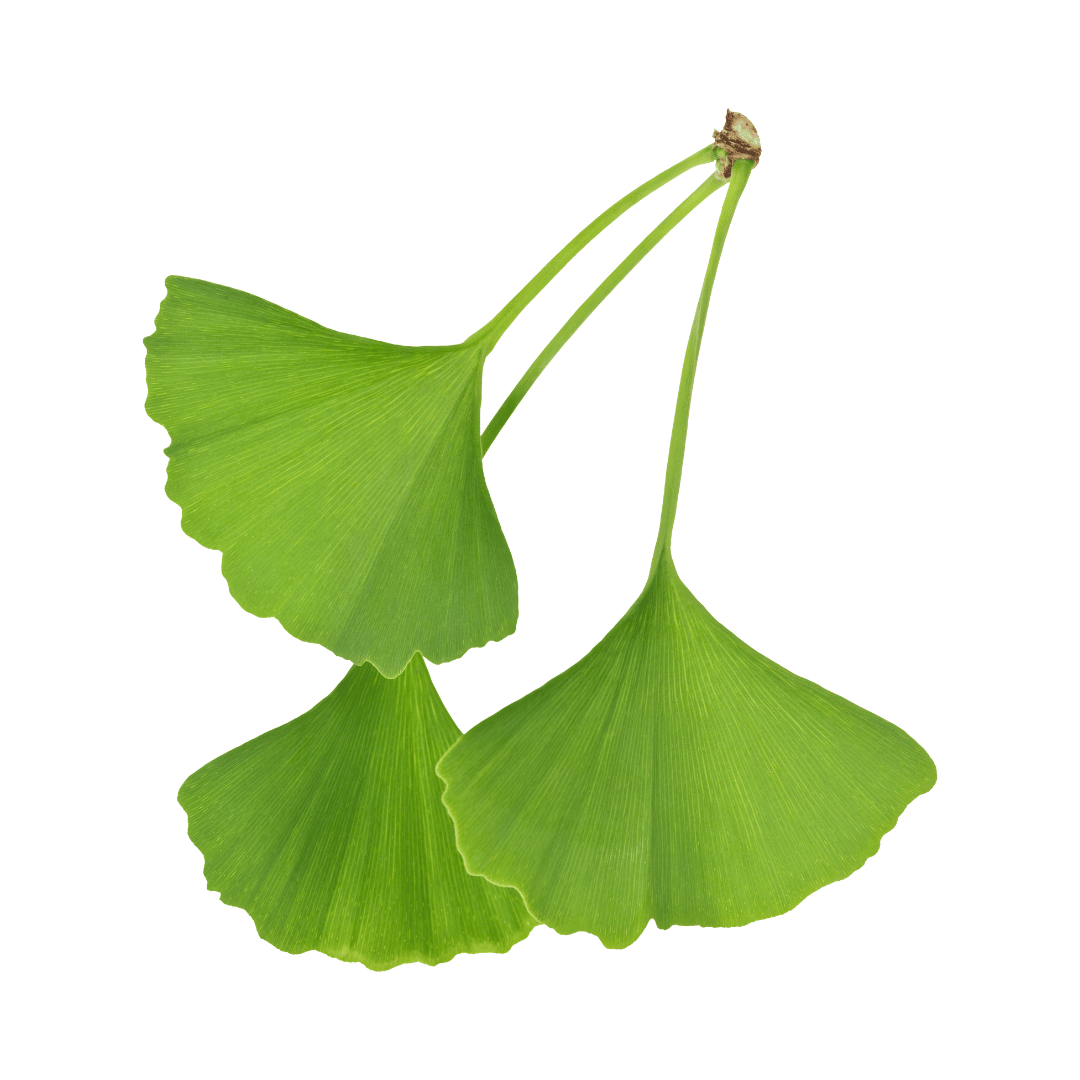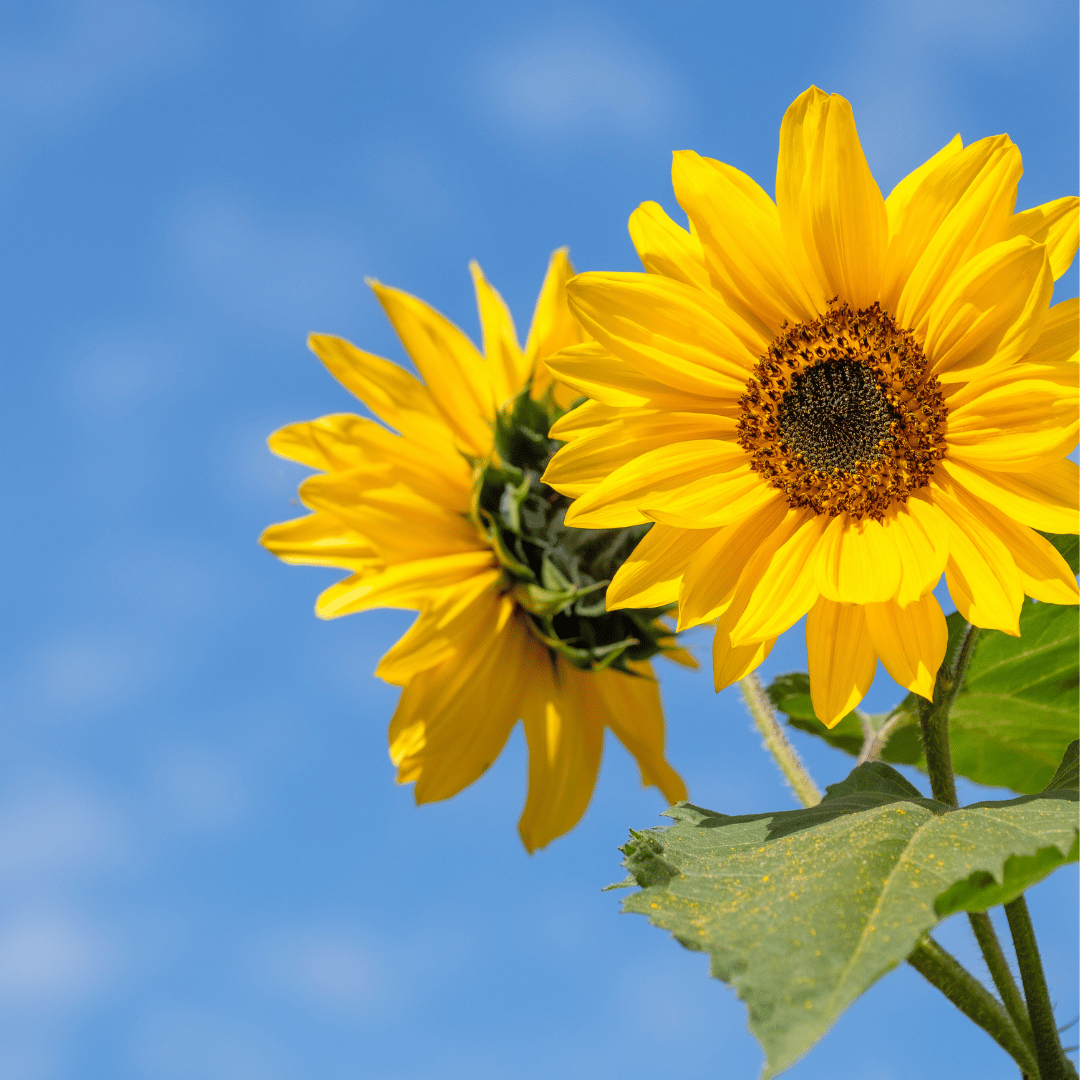Chinese Peony (Paeonia lactiflora) is a flowering shrub indigenous to central and eastern Asia, including China, Serbia, and Mongolia. It’s been grown as an ornamental in China since the 7th century 1, and its roots are commonly used in Traditional Chinese Medicine (TCM) to treat a wide range of ailments. Scientific investigations support some of these medical benefits. The plant’s roots can also be added to tea, soup, or ground into powder.
Chinese Peony is also known as white peony, bao shao (bai shao), garden peony, or common peony.
Although many active components exist in Paeoniaceaeplants, like polyphenols, and paeonol,2 paeoniflorin, a monoterpene glycoside, is considered the most important medicinal ingredient.3It is the most abundant component and the main biologically active ingredient of the Chinese Peonyroot extract.
Modern medical studies have shown that paeoniflorin has immunoregulatory, antidepressant, anti-arthritis, antithrombosis, anti-tumour, hepatoprotective, cerebral ischemic injury protective, and neuroprotective effects. 4
As we’ll see, this is why Chinese Peony is included as a key ingredient in both our Skin and Joint Thera-Chews™️ for dogs.
Benefits of Chinese Peony
Chinese Peony is a potent anti-inflammatory
In China, Korea, and Japan, a decoction of the dried root of Chinese Peonyhas been used in the treatment of rheumatoid arthritis, systemic lupus erythematosus, hepatitis, dysmenorrhea, muscle cramping and spasms, and fever for more than 1200 years.5
Research, both in vitro and in vivo, has demonstrated the anti-inflammatory and immuno-modulatory effects of Chinese Peony. Paeoniflorin is responsible for the significantly inhibiting and down-regulating the level and function of specific pro-inflammatory cells.5
Chinese Peony has an anti-allergic effect
A 2008 study isolated the main constituents of Chinese Peony--paeoniflorin, and paeonol-- and evaluated their anti-allergic effect on mice. Both compounds potently inhibited allergic reactions and scratching behaviours in mice.10
In another medical investigation, oral administration of Chinese Peonywas shown to treat and prevent allergic contact dermatitis, a skin disease caused by an adverse reaction to allergens in contact with the skin, characterized by redness, papules, vesicles, followed by scaling and dryness.11
Chinese Peony supports skin health
Chinese Peonycan enhance the integrity of the skin barrier and has therapeutic potential for treating diseases associated with disruption of the skin barrier.12
In a 2022 study, Chinese Peonyextract alleviated atopic dermatitis-like symptoms by regulating the inflammatory response and changing the gut microbial composition.13
Chronic urticaria
Chronic urticaria is characterised by intense itching and red skin welts. Urticaria in cats and dogs can be an itchy and uncomfortable condition characterized by skin welts and hives. In humans, the usual treatment for the skin problem is cetirizine.
A 2010 study compared the effect of paeony root extract with cetirizine in patients suffering from chronic urticaria. The treatment of paeony root extract combined with cetirizine showed a definite curative effect in treating chronic urticaria, with a low relapse rate and without evident adverse reactions.15
Skin hyperpigmentation
Chinese Peonyroots are used in association with other herbs in traditional clinical cosmetic practice in China as an oral treatment for skin pigmentation disorders, such as brown or dark pigmentation spots. This skin-lightening potential was supported by a study that showed the de-pigmenting potential of paeoniflorin and reducing the severity of some hyper-pigmented skin disorders.14Melanin production was reduced when the extract was applied to a human skin sample. Melanin is the pigment that gives the colour of the skin.
Hyperpigmentation can affect cats and dogs of all breeds, hair coat types, and ages. The condition is associated with increased production and deposition of melanin in the layers of the skin, particularly the epidermis resulting in darkening of the skin.
Chinese Peony supports bone and joint health
The anti-inflammatory and immuno-modulatory effects of Chinese Peony root extract provide the therapeutic basis for treating of autoimmune diseases that can affect the bones and joints.
Paeoniflorin exerts immuno-suppressive effects on rats with arthritis. It has powerful anti-inflammatory and immune-regulatory effects in some animal models of autoimmune diseases, including Rheumatoid Arthritis (RA) and Systemic Lupus Erythematosus (SLE). It can significantly lower the proliferation and production of pro-inflammatory cells. 18
Rheumatoid arthritis in cats and dogs can be very painful and can lead to mobility problems.
Systemic lupus can affect many body functions and systems. It’s a serious condition, and cats and dogs diagnosed with the illness often have a guarded prognosis.
A pilot study also showed the therapeutic benefits of Chinese Peony extract on ankylosing spondylitis in humans. There was significantly improved clinical efficacy indexes and better joint pain index.19
Spondylitis is quite common in cats and dogs. It’s a non-inflammatory, degenerative disease affecting the bones of the spine. It’s an age-related issue but could also be caused by a previous spinal trauma.
Chinese Peony has antioxidant benefits
Chinese Peony roots exert an antioxidant effect on the body. The active constituents, particularly paeoniflorin, have been demonstrated in several scientific studies to protect cells against oxidative stress. A 2005 study observed that the ethanol extracts of the peony root (PREs) and its active constituents, gallic acid, and methyl gallate, exhibited a significant free radical scavenging effect and protected cells from oxidative damage.8
Paeoniflorin exerts a neuro-protective effect on the cortical cells of rats exposed to oxidative stress. It also exerts an antioxidant effect on inflammatory reactions affecting the liver 6 and kidneys7.
Chinese Peony can provide pain relief
In Traditional Chinese Medicine (TCM), Chinese Peonyis used for relieving pain associated with various causes. This analgesic effect was verified by several scientific studies using diverse animal models of pain.5
Pain associated with trauma or infections is often treated with nonsteroidal anti-inflammatory drugs (NSAIDs). However, these drugs are not without adverse effects, like severe gastrointestinal upsets and stomach ulcers. Research showed that Chinese Peonyhad good anti-inflammatory and analgesic effects by reducing the release of inflammatory factors and inhibiting specific pain-associated activity in the central nervous system.9
Does Chinese Peony have adverse effects?
A common adverse reaction observed in several scientific studies on Chinese Peony extracts mainly involved mild gastrointestinal upsets that self-resolved in 1-2 weeks. No adverse events affecting the liver, kidney, or blood were noted.
Joint problems, skin issues, and allergies are common health issues affecting cats and dogs of all breeds and ages.
One of the best ways to help ensure that your furry friend lives a full, healthy, and happy life is prevention. Start giving a supplement that supports joint and skin health and function!
Bestie Skin Thera-Chews™️help reduce itchy skin. These mini chews for dogs have a powerful blend of amino acids, pro and postbiotics, Chinese herbs and algal extracts. Bestie Joint Thera-Chews™️ improve support healthy joints. These mini chews are a mix of green tea extract, traditional Chinese herbs including Chinese peony, and probiotic blend.

Dr. Merliza Cabriles is a Licensed Veterinarian and a University Professor with many years of experience in food animal and pet companion medicine. Her passion for writing and pet parent education and support are echoed in the articles she has written for various websites in the pet niche, including bestie’s! She enjoys cultivating positive relationships with her clients and dedicates her time to educating and supporting pet parents in providing the best care for their pets.In her spare time, she enjoys trekking and traveling.
References:
- https://en.wikipedia.org/wiki/Paeonia_lactiflora Date Accessed: August 15, 2023
- Liu, L., Yuan, Y., Zuo, J., & Tao, J. (2023). Composition and antioxidant activity of Chinese Peony petal flavonoid extract and underlying mechanisms of the protective effect on H2O2-induced oxidative damage in BRL3A cells. Horticultural Plant Journal, 9(2), 335-344. https://doi.org/10.1016/j.hpj.2022.06.001
- Xiu, J. X., Xu, J., Zhang, T. J., and Liu, C. X. (2021). Modern research progress of traditional Chinese medicine Paeoniae radix Alba and prediction of its Q-markers. China J. Chin. Materia. Medica. 46, 5486–5495. doi: 10.19540/j.cnki.cjcmm.20210818.201
- Zhang, X., Zuo, J., Wang, Y., Duan, H., Yuan, J., & Hu, Y. (2022). Paeoniflorin in Paeoniaceae: Distribution, influencing factors, and biosynthesis. Frontiers in Plant Science, 13, 980854. https://doi.org/10.3389/fpls.2022.980854
- He, D., & Dai, S. (2011). Anti-Inflammatory and Immunomodulatory Effects of Chinese Peony Pall., a Traditional Chinese Herbal Medicine. Frontiers in Pharmacology, 2, 9394. https://doi.org/10.3389/fphar.2011.00010
- Kim, I.D., Ha, B.J. The effects of paeoniflorin on LPS-induced liver inflammatory reactions. Pharm. Res.33, 959–966 (2010). https://doi.org/10.1007/s12272-010-0620-8
- Jing Su, Pei Zhang, Jing-Jing Zhang, Xiang-Ming Qi, Yong-Gui Wu, Ji-Jia Shen, Effects of total glucosides of paeony on oxidative stress in the kidney from diabetic rats, Phytomedicine, Volume 17, Issues 3–4, 2010, Pages 254-260, ISSN 0944-7113, https://doi.org/10.1016/j.phymed.2009.07.005
- Lee SC, Kwon YS, Son KH, Kim HP, Heo MY. Antioxidative constituents from Paeonia lactiflora. Arch Pharm Res. 2005 Jul;28(7):775-83. doi: 10.1007/BF02977342. PMID: 16114491.
- Bo Hu; Guangtao Xu; Xiaomin Zhang; Long Xu; Hong Zhou; Zhenyi Ma; Xiaohua Shen; Jia Zhu; Ruilin Shen. Paeoniflorin Attenuates Inflammatory Pain by Inhibiting Microglial Activation and Akt-NF-κB Signaling in the Central Nervous System. Cellular Physiology and Biochemistry(2018) 47 (2): 842–850. https://doi.org/10.1159/000490076
- Lee, B., Shin, YW., Bae, EA. et al.Antiallergic effect of the root of Chinese Peonyand its constituents paeoniflorin and paeonol. Pharm. Res.31, 445–450 (2008). https://doi.org/10.1007/s12272-001-1177-6
- Dongmei Shi, Xuefeng Li, Dongmei Li, Quanjing Zhao, Yongnian Shen, Hongxia Yan, Hongjun Fu, Hailin Zheng, Guixia Lu, Ying Qiu, Weida Liu,Oral administration of paeoniflorin attenuates allergic contact dermatitis by inhibiting dendritic cell migration and Th1 and Th17 differentiation in a mouse model, International Immunopharmacology, Volume 25, Issue 2, 2015, Pages 432-439, ISSN 1567-5769, https://doi.org/10.1016/j.intimp.2015.02.031
- Kim, K., Shim, J. S., Kim, H., & Son, E. D. (2020). Penta-O-galloyl-β-D-glucose from Chinese Peony Pall. root extract enhances the expression of skin barrier genes via EGR3. Journal of Ethnopharmacology, 248, 112337. https://doi.org/10.1016/j.jep.2019.112337
- Lee, S. Y., Hong, S. H., Kim, H. I., Ku, J. M., Choi, Y., Kim, M., & Ko, S. (2022). Chinese Peony Pallas extract alleviates antibiotics and DNCB-induced atopic dermatitis symptoms by suppressing inflammation and changing the gut microbiota composition in mice. Biomedicine & Pharmacotherapy, 154, 113574. https://doi.org/10.1016/j.biopha.2022.113574
- Qiu, M. Chen, J. Liu, X. Huang, J. Chen, L. Zhou, J. Ma, P. Sextius, A.-M. Pena, Z. Cai, S. Jeulin. The skin-depigmenting potential ofChinese Peony root extract and paeoniflorin: in vitro evaluation using reconstructed pigmented human epidermis. https://doi.org/10.1111/ics.12309
- Long JW, Wang YY, Pi XM, Tu YT. Clinical observation on the treatment of chronic urticaria with total glucosides of paeony capsule combined with citirizine. Chin J Integr Med. 2010 Aug;16(4):353-6. doi: 10.1007/s11655-010-0504-2. Epub 2010 Aug 10. PMID: 20697948.
- Yang JM, Sun Y, Wang M, Zhang XL, Zhang SJ, Gao YS, Chen L, Wu MY, Zhou L, Zhou YM, Wang Y, Zheng FJ, Li YH. Regulatory effect of a Chinese herbal medicine formula on non-alcoholic fatty liver disease. World J Gastroenterol. 2019 Sep 14;25(34):5105-5119. doi: 10.3748/wjg.v25.i34.5105. PMID: 31558860; PMCID: PMC6747291.
- Ye S, Mao B, Yang L, Fu W, Hou J. Thrombosis recanalization by paeoniflorin through the upregulation of urokinase‑type plasminogen activator via the MAPK signaling pathway. Mol Med Rep. 2016 Jun;13(6):4593-8. doi: 10.3892/mmr.2016.5146. Epub 2016 Apr 15. PMID: 27082639; PMCID: PMC4878539.
- Tu J, Guo Y, Hong W, Fang Y, Han D, Zhang P, Wang X, Körner H and Wei W (2019) The Regulatory Effects of Paeoniflorin and Its Derivative Paeoniflorin-6′-O-Benzene Sulfonate CP-25 on Inflammation and Immune Diseases. Front. Pharmacol. 10:57. doi: 10.3389/fphar.2019.00057
- Wang SL, Wang JP, Bian H. [Clinical observation on total glucosides of paeony combined with sulfasalazine in treatment of ankylosing spondylitis]. Zhongguo Zhong Xi Yi Jie He Za Zhi. 2007 Mar;27(3):217-9. Chinese. PMID: 17432680.





